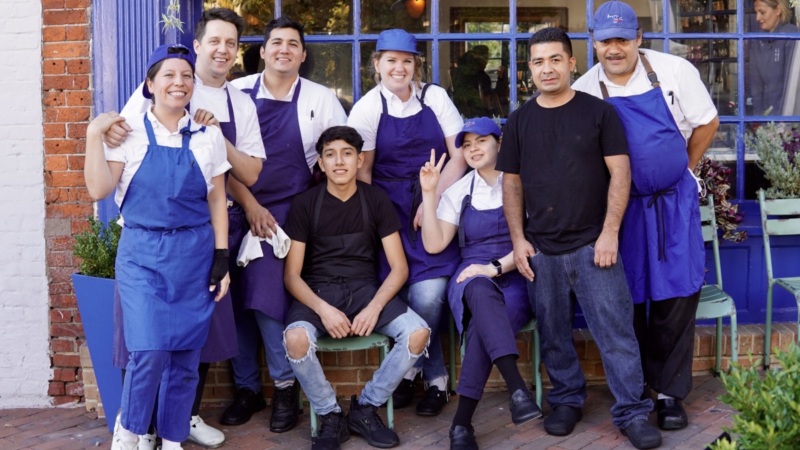

Is it Time for Your Restaurant to Rebrand?
Have you changed your outward appearance as you’ve gotten older? Maybe added a tattoo, updated the length of your hair, or swapped out your clothing for newer styles? Altering how you present yourself externally to match how you’ve evolved internally is a great way to think about rebranding. According to the definition provided by Douglas Riccardi, the owner and creative director of New York-based design agency Memo NY, “Rebranding is a realignment or a refocusing of the outward expression of who [your business is] as a brand.”
During the pandemic, many restaurant operators found themselves either advertently—or inadvertently—changing the direction of their operations. But not all took steps to reintroduce themselves to diners. Not sure if your business is ready for a rebrand and what steps to take? Riccardi shared his expertise with three telltale signs it might be time and three steps to get started.
You might be ready to rebrand if:
1. Your business has matured.
“Lots of restaurants start in a very organic way. You get some money; you open a restaurant. And by some miracle, it catches on,” says Riccardi. Then the operation grows organically over time, but not linearly or strategically. Because of that, notes Riccardi, the public image can become a little scattershot, creating a chasm between what the operation is and what the owners want it to be. “The owners can feel like a dinosaur. And the business can be anachronistic or a little sad around the edges.”
2. Your business has new revenue streams.
The pandemic has become (in)famous for precipitating a shift in hospitality operations. Maybe your business started doing takeout or began offering delivery cocktails in 2020. Or maybe, like some of Riccardi’s clients, you started selling online through a platform like Goldbelly. Then suddenly “your brand as it exists is limiting your ability to play well in multiple areas.”
3. You’re looking to expand to new locations.
“Let’s say you see real potential to take your brand from three restaurants to 30 units. Either on your own or with external investors. But doing that requires solidifying who you are,” says Riccardi. This, he notes, is a more standardized view of branding that requires telling your story succinctly. It may be rarer in the hospitality world than in other business sectors, but rebranding can be a powerful tool for any business owner looking to grow.
Once you’ve decided to rebrand, you should:
1. Do your research internally and externally.
Speak with your staff and existing customers about how they feel about your restaurant. Use feedback from review sites (or if you’re a Resy OS customer, from Guest Surveys) to inform your new creative strategy. “While [you] might uncover negatives, things customers don’t like, primarily focus on what is right,” says Riccardi.”
2. Decide what design elements to keep and what to toss from your current branding.
Does everything need to change, or do you only need to make a few tweaks? Riccardi explains, “It’s key to remember how much every aspect of the restaurant experience informs the others. Often the same brand logo on an updated menu delivery system or the same pieces of collateral delivered in a refreshed environment can be like night and day.”
3. Don’t stress about changing everything all at once.
“Not every restaurateur can afford to toss every piece of legacy collateral or is lucky enough that they just used the last case of the 25,000 takeout bag order,” notes Riccardi. And so it is possible while you work out and implement your rebranding plan that the old and new coexist. And that’s okay. “Things changing abruptly can often send spooky ‘Under New Management’ signals. Allowing customers to witness a transformation in real time can be as exciting as it is comforting.”
*Opinions and views in articles shared on Resy OS are presented for the purpose of discussion and commentary on topics of interest in the restaurant industry; they should not be viewed as substitutes for advice given by professionally engaged business consultants and advisors.
Discover More















